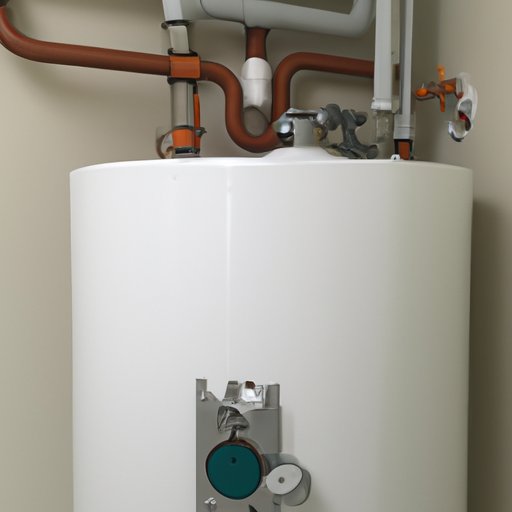Introduction
Tankless water heaters, also known as on-demand or instantaneous water heaters, are gaining popularity in households across the country. Unlike traditional water heaters that rely on a storage tank to supply hot water, tankless water heaters provide hot water on demand. This means that instead of continuously heating and reheating a large tank of water, tankless water heaters only heat the water when it is needed.
The benefits of a tankless water heater are numerous. They are energy efficient, require less space, and can provide an endless supply of hot water. In addition, they are designed to last longer than traditional models and are often backed by extended warranties. As such, many homeowners are turning to tankless water heaters to meet their hot water needs.
An In-Depth Look at Tankless Water Heaters
Tankless water heaters are composed of several key components, including a gas burner, a heat exchanger, a thermostat, and a flow sensor. The gas burner heats the water as it passes through the heat exchanger. The thermostat allows the user to set the desired temperature of the water. The flow sensor detects the amount of water flowing through the unit, and adjusts the temperature accordingly.
There are two main types of tankless water heaters: electric and gas. Electric tankless water heaters are powered by electricity and require no additional fuel source. Gas tankless water heaters, on the other hand, use natural gas or propane to heat the water. Both types of tankless water heaters are energy efficient and provide an endless supply of hot water.

How to Install and Maintain a Tankless Water Heater
Installing a tankless water heater is a relatively simple process. First, the unit must be placed in an area with adequate ventilation. Then, the necessary connections for water and gas must be made. Finally, the unit must be tested to ensure that it is working properly. For homeowners who are not comfortable with the installation process, hiring a professional is recommended.
Maintenance of a tankless water heater is also important. Regularly flushing the unit can help improve performance and reduce the risk of corrosion. Additionally, it is important to check all connections and valves to ensure they are functioning properly. Following these steps can help extend the life of your tankless water heater.
Understanding the Basics of a Tankless Water Heater System
Now that we’ve discussed the components and installation of a tankless water heater, let’s take a closer look at how it works. When a hot water tap is turned on, cold water enters the unit and is heated by the gas burner or electric element. The hot water then exits the unit and travels to the desired outlet. As soon as the tap is turned off, the heating process stops, ensuring that no energy is wasted.
The advantages of a tankless water heater system are numerous. Since it only heats the water when it is needed, it eliminates standby energy loss. Additionally, since it does not require a storage tank, it takes up much less space than traditional water heaters. This makes it ideal for small homes or apartments.

Comparing Traditional Water Heaters to Tankless Water Heaters
When comparing traditional water heaters to tankless water heaters, there are a few key factors to consider. One of the most important is cost. According to the U.S. Department of Energy, tankless water heaters can cost up to three times more than traditional water heaters. However, tankless water heaters can save money over time due to their higher efficiency.
In terms of efficiency, tankless water heaters generally have a higher efficiency rating than traditional water heaters. This is because they do not need to reheat stored water, which results in less energy being used. Additionally, tankless water heaters are designed to last longer than traditional models, making them a more cost-effective long-term investment.

Tips for Choosing the Right Tankless Water Heater
Choosing the right tankless water heater for your home can be a daunting task. It is important to consider your needs before making a purchase. Think about the size of your home, the number of people living in it, and how much hot water you will need.
Doing your research is also essential. Read reviews and compare different models to find one that meets your needs and budget. Additionally, investing in quality is important. While cheaper units may seem attractive, they are likely to break down sooner and require more repairs. By investing in a quality tankless water heater, you can save money in the long run.
Conclusion
Tankless water heaters are becoming increasingly popular in households across the country. They offer numerous benefits, including energy efficiency, space savings, and an endless supply of hot water. Installing and maintaining a tankless water heater is relatively easy, and understanding the basics of how it works can help you get the most out of your unit.
When choosing the right tankless water heater for your home, it is important to consider your needs, do your research, and invest in quality. With the right tankless water heater, you can enjoy hot water on demand and save money in the long run.
(Note: Is this article not meeting your expectations? Do you have knowledge or insights to share? Unlock new opportunities and expand your reach by joining our authors team. Click Registration to join us and share your expertise with our readers.)
